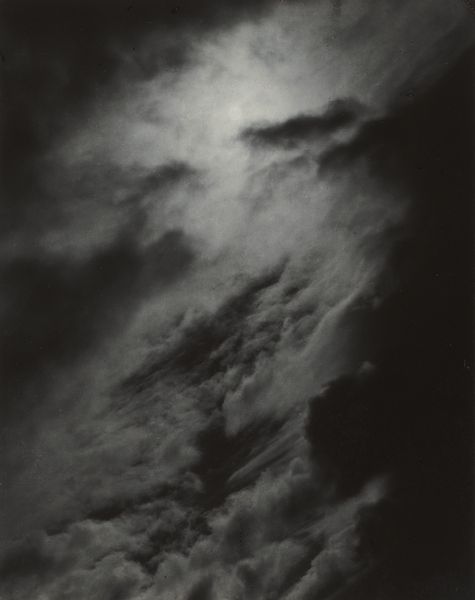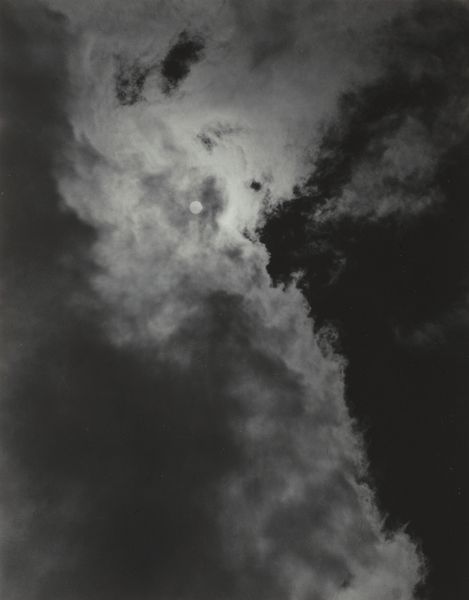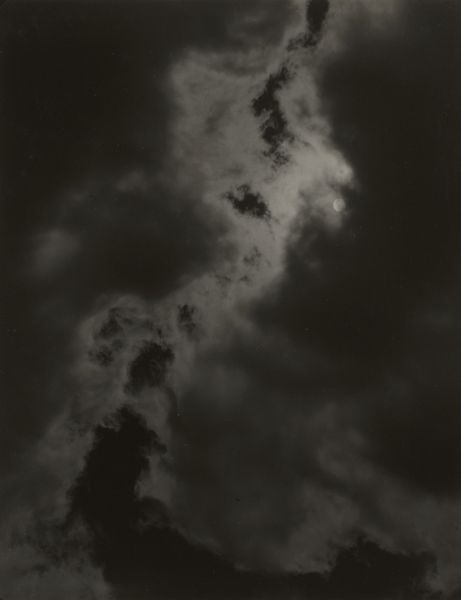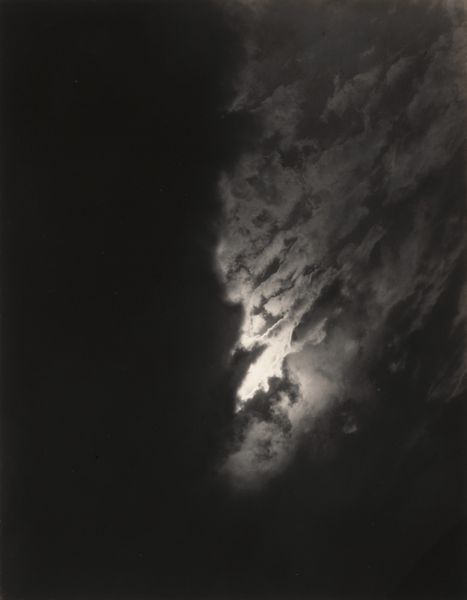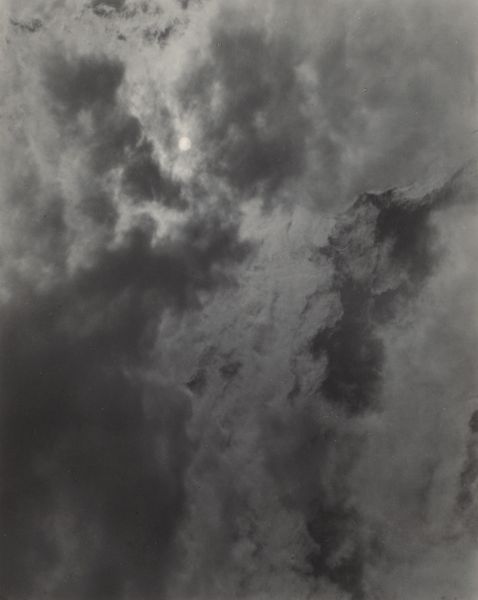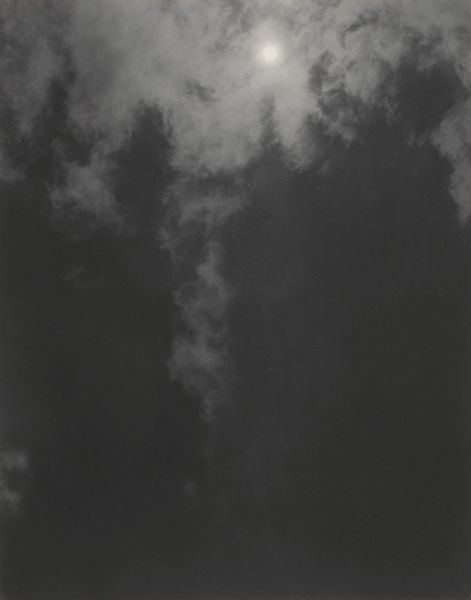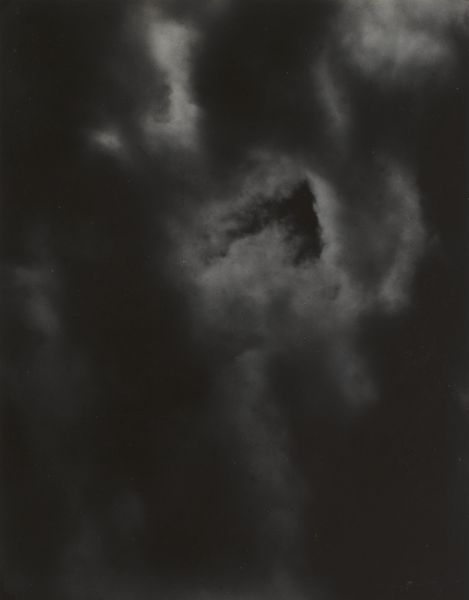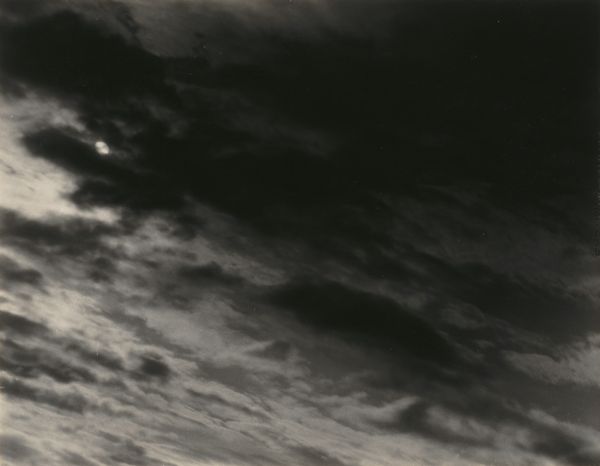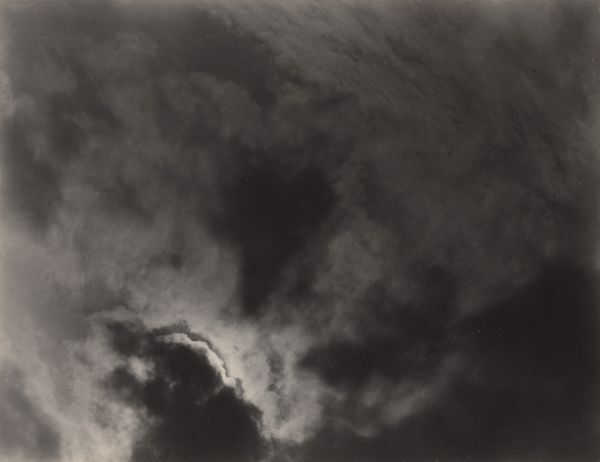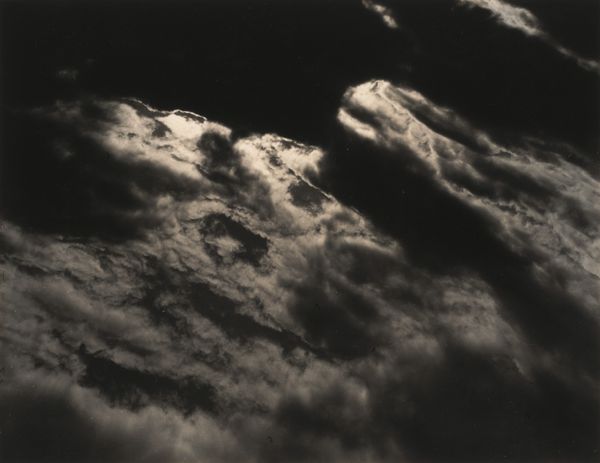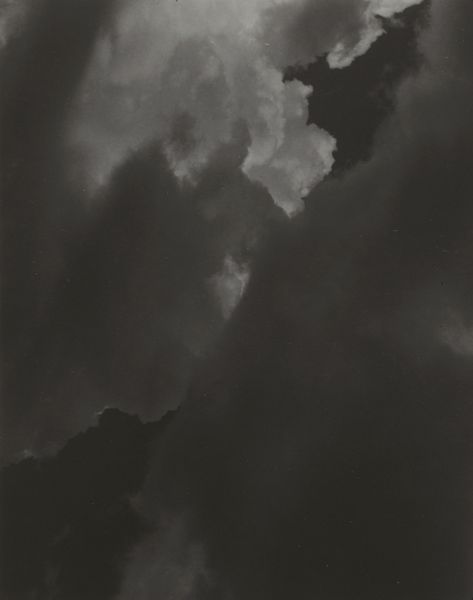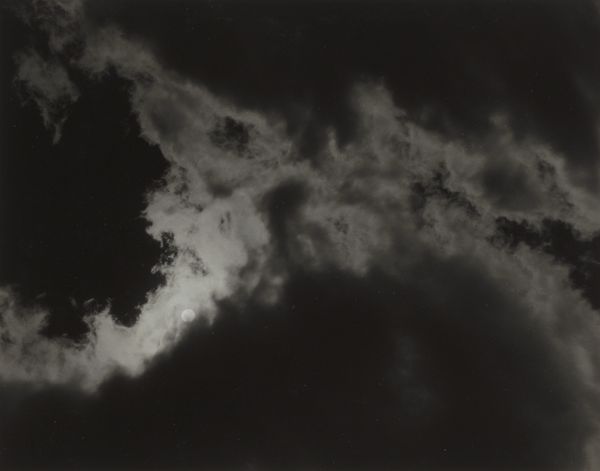
Dimensions: sheet (trimmed to image): 11.8 x 9.2 cm (4 5/8 x 3 5/8 in.) mount: 34.2 x 27.2 cm (13 7/16 x 10 11/16 in.)
Copyright: National Gallery of Art: CC0 1.0
Curator: Welcome. Before us is "Equivalent," a gelatin silver print by Alfred Stieglitz, made in 1925. Editor: A very brooding sky. The dark, churning clouds certainly evoke a sense of foreboding, almost romantic in their intensity. Curator: The photograph’s formal qualities are striking. Note the arrangement of light and dark masses and how Stieglitz creates a composition using only tonal variations. Consider how these shapes interact, creating a visual rhythm across the frame. Editor: Skies often symbolize emotional states. Throughout art history, turbulent skies frequently suggest inner turmoil or even divine power. Stieglitz was going through personal upheavals during that time; might this sky capture his mood, his spiritual anxieties? Curator: Stieglitz referred to this series of photographs as "Equivalents," suggesting he wanted them to be seen as equivalent to inner states or feelings, not simply representational depictions of clouds. It pushes the viewer to consider abstraction in relation to emotion. The composition moves beyond a traditional landscape; the balance and proportion contribute to an expression beyond direct symbolism. Editor: But aren't all clouds, to a certain extent, symbols? We see figures in them, project meaning onto them. Clouds have long held symbolic weight; their changeability mirroring human experiences. Stieglitz choosing *only* clouds feels incredibly deliberate—stripped bare, revealing only feeling. Curator: Precisely. By isolating this natural form and exploring its grayscale variations, Stieglitz prompts us to analyze the pure aesthetics and structural qualities of the photograph. His process itself becomes a point: this is a *made* object, a conscious act of artistic decision-making, rather than mere reproduction. Editor: And yet, in its stark simplicity, it becomes a Rorschach test. Perhaps that was Stieglitz's genius: harnessing a universal symbol, rendered with technical precision, to provoke profound personal reflection. Curator: Absolutely, it serves as a key point regarding modernist image construction; structure first, affect follows. Editor: A dark piece that can also invite self-reflection, which maybe, is a kind of unexpected, quiet beauty.
Comments
No comments
Be the first to comment and join the conversation on the ultimate creative platform.

